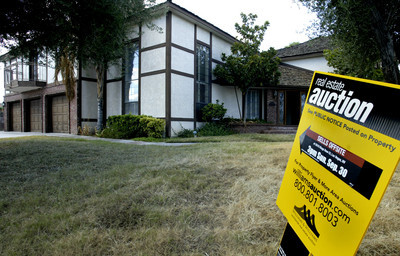Is twilight for suburbia looming?
It won't happen overnight. Things like this tend to occur gradually, in fits and starts, over decades. Perhaps only in hindsight will we really understand what happened.
Then again, it might not happen at all. Nevertheless, the mounting evidence that it could happen is fascinating to ponder.
"It" is the fall of the suburbs.
Some experts are looking at the subprime mortgage crisis, demographic trends, marketing surveys and case studies across the country and drawing an intriguing conclusion: The suburb -- the icon of the postwar American dream -- is losing its luster.
That's actually a kind way of putting it. The March issue of The Atlantic magazine has a pleasant photograph of a cluster of suburban homes above the headline, "The Next Slum?" An examination of the subject in the Boston Review calls it "suburbia's midlife crisis."
"The future is not likely to wear well on suburban housing," Christopher Leinberger, an urban planning professor at the University of Michigan, writes in The Atlantic.
According to people studying the issue, the flight to suburbia of the past 50 years may be reversed in the next 50. Under this scenario, people will move to the cities to escape the crime and decay of the suburbs. "Today the pendulum is swinging back toward urban living, and there are many reasons to believe this swing will continue," Leinberger writes.
At first blush, this may sound unlikely, if not absurd -- wishful thinking by urban planners and academics nostalgic for prewar urban lifestyles. After all, millions of Americans are perfectly happy with their suburban homes and neighborhoods and haven't given a second thought to relocating to the central city.
But Leinberger and others are looking past surface appearances, and they see compelling evidence that at least some suburbs in the future will lose the appeal they have enjoyed in the past.
Before we get to that evidence, though, some history:
Originally, American cities had bustling urban cores where people from all walks of life occupied a mix of housing types. If you didn't actually live "downtown," you lived just outside it and traveled there regularly to work, to shop, to eat and to be entertained.
After World War II, a new kind of lifestyle captured the public's imagination. The suburbs became the most-sought-after living arrangement for baby boom parents. Why live cheek-by-jowl with noisy neighbors when you could command a half-acre paradise of your very own? As the middle class moved out of the cities and commercial and public services followed them, people no longer had reasons to go downtown. As a result, urban cores decayed, hollowed out. Left behind were those lacking the means to escape. Crime and drugs took the place of community and culture.
Over the past 25 years or so, municipal governments have spent billions to revive their downtowns. Some redevelopment programs have had more success than others -- it's too early to tell in Las Vegas -- but none has managed to dislodge the public's longing for the suburban ideal.
While redevelopment has saved many downtowns from falling into Third World chaos, few officials have expressed concern that one day suburbs will have to be rescued as well.
But the subprime mortgage crisis has hit the newest suburban neighborhoods the hardest, leaving many houses empty and others occupied by transient renters. Empty houses tend to fall into disrepair and become magnets for crime. In some subdivisions on the edges of the Las Vegas Valley, practically every other house is empty.
Leinberger also notes that many "modern suburban houses, even high-end McMansions, are cheaply built" -- in other words, not built to last. We know this very well in Las Vegas, where thousands of houses have been built as quickly as possible and without much consideration for whether they would be habitable 50 years hence. Over the next few decades, more of our suburban neighborhoods are going to exhibit the ill effects of slapdash construction.
Meanwhile, marketers have identified a strong interest among at least 30 percent of the home-buying population in moving back to the city. Torturous commutes, rising gasoline prices and desire for a genuine urban lifestyle are fueling a middle-class return to urban centers. This is evident locally in older neighborhoods such as McNeil Estates and Huntridge, as well as a handful of downtown condo towers.
Developers are not blind to this trend. But rather than abandoning the suburbs, some are bringing the city to the outskirts. The best local example is The District, a classic urban-style retail-residential development plopped down in suburbia. It feels like downtown but without the winos.
It's certainly possible that when the real estate slump recedes, half-empty suburban neighborhoods will fill up and construction of cookie-cutter subdivisions will resume. This may be more likely in growing Las Vegas than in more stagnant areas. But in the long run, the futurists seem to be on the right track: Suburbia will peak, if it hasn't done so already, and begin a downward slide. At the same time, urban lifestyles will gain ground.
American cities are constantly changing, evolving -- none more so than Las Vegas. The suburb was a practical way to put roofs over the heads of a ballooning postwar population, but it may not be a good fit for future generations.
Geoff Schumacher (gschumacher@reviewjournal.com) is publisher of Las Vegas CityLife, an alternative newsweekly owned by the same company as the Review-Journal. He also is the author of "Sun, Sin & Suburbia: An Essential History of Modern Las Vegas" and "Howard Hughes: Power, Paranoia & Palace Intrigue." His column appears Sunday.

















